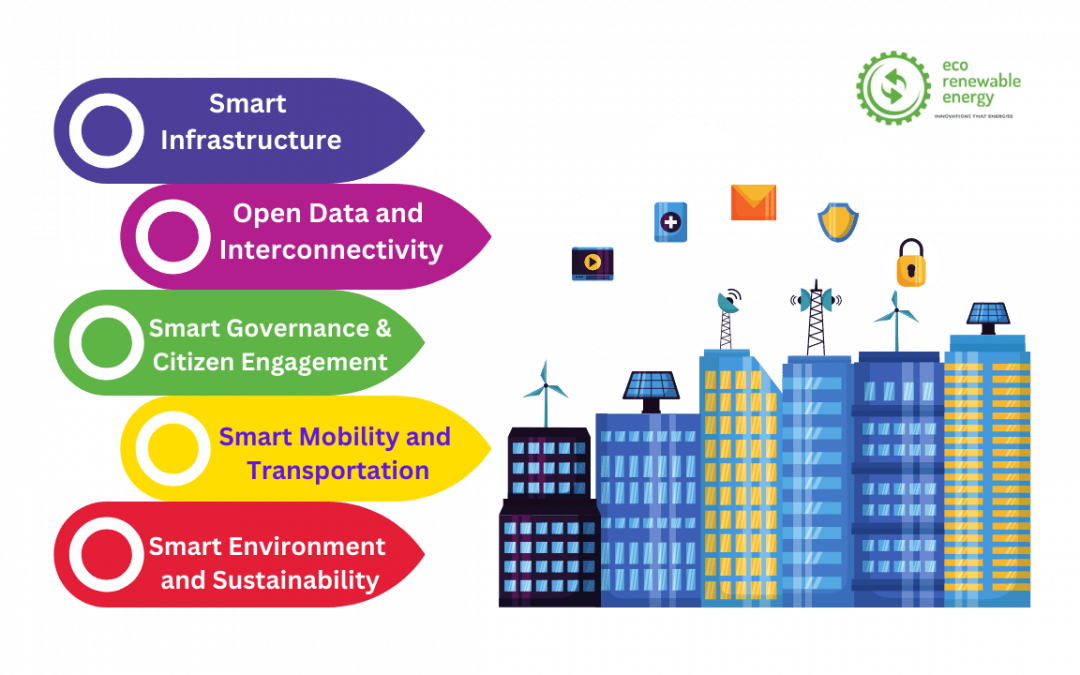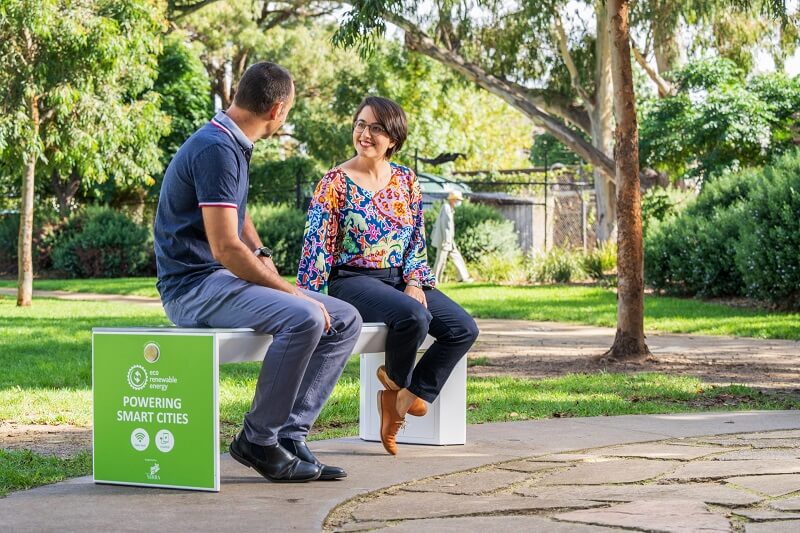Table of Contents
A smart city is an urban region that makes use of cutting-edge technology and data to raise the quality of life of the citizens, promote sustainability, and manage resources and assets more effectively. In order to gather and analyse data from multiple sources, such as sensors, cameras, and mobile devices, in real-time, smart cities employ a variety of technologies, including the Internet of Things (IoT), artificial intelligence (AI), and big data analytics. This data is then utilised to boost public involvement, enhance services, and optimise city operations.
Since they employ technology and data to address urban difficulties, improve sustainability, boost efficiency, and enhance citizen quality of life, smart cities are significant and matter. Smart cities stimulate economic growth, draw in new enterprises and investments, and encourage entrepreneurship through fostering innovation and technology. Smart cities encourage transparency and participatory government by including residents in decision-making processes. Using resources more wisely and creating a more habitable and sustainable environment for future generations may lessen the environmental effect of metropolitan areas.
Key Elements of a Smart City
Smart Infrastructure
The idea of a “smart city” is all about utilising technology and creativity to develop a sustainable and effective urban setting. Establishing a smart infrastructure that acts as the backbone of a smart city is one of the key elements in creating a smart city. Smart infrastructure integrates cutting-edge technology, sensors, and data analytics into existing infrastructure to increase its effectiveness, safety, and sustainability.
Examples of smart infrastructure include:
Smart Solar Benches: Smart solar benches are equipped with solar panels that use the sun’s energy to produce power. The energy may subsequently be utilised to run lighting systems or charge mobile gadgets. These benches enhance the public seating experience and also help towards a sustainability approach. These benches have WiFi, which significantly contributes to the development of a smart city.
Example: Smart Benches in Yarra City council. Yarra city council had partnered with Eco Renewable Energy, installed multiple Smart solar benches in their community parks, and taken one step towards creating a smart city. It exemplifies Eco Renewable Energy’s mission of driving sustainability and empowering local councils through clean energy technologies.
Solar Tiles: These innovative tiles are charged by sunlight & are pressure sensored to react to anyone walking over them – lighting up the LEDs inside the floors and activating a variety of games to play on the floors. These tiles then generate renewable energy which can either be put back into the grid or stored in a battery to use later on. Solar tiles are installed in high-traffic areas of smart cities around the world. These green and highly interactive tiles are the ideal addition to the infrastructure of smart cities. Brands across Australia use the energy floors for their brand activations to engage their audience and create a memorable experience, all while reducing their carbon footprint.
Open Data and Interconnectivity
Creating a smart city requires essential elements such as connectivity and open data. Open data enables people, companies, and government organisations to create new services and enhance current ones, fostering openness, cooperation, and innovation. On the other hand, interconnectivity enables systems to interact and exchange data, enabling smart city technologies to operate in unison.
Open data offers several advantages, such as increased accountability and openness, higher efficacy and efficiency, better decision-making, and greater public engagement. Interconnectivity is crucial for realising the full potential of smart city technologies, ensuring that they operate in concert. By enabling various technologies to communicate with each other, cities can improve their transportation systems, energy efficiency, increase public safety, and provide various other benefits to their residents.
The City of Helsinki, Finland, has established an open data platform that includes over 3000 datasets made openly available to the public. These data sets include information about public transportation, air quality, energy usage, etc. The city has also implemented interconnectivity amongst various city technologies to communicate with each other.
A mobile application that provides real-time information about public transportation schedules and availability. This interconnectivity system also supports the city’s efforts to reduce energy consumption and carbon emissions by enabling energy data to be shared across different systems and devices.
Smart Governance and Citizen Engagement
A successful smart city must have smart government and public involvement. “Smart governance” refers to the use of technology to enhance government operations and decision-making. At the same time, citizen engagement ensures that residents have a say in the creation and execution of smart city programs.
To guarantee that smart city programmes are adapted to the requirements and preferences of local communities, smart governance and citizen participation are crucial since they assist in establishing trust and confidence among residents. Cities may build more inclusive and sustainable smart cities that benefit all societal members by including residents in decision-making and giving them access to information and resources.
A real-life example of Smart Governance and Citizen Engagement is the “Madrid Participatory Budgeting” initiative in Madrid, Spain. By submitting and voting on projects for their communities, the initiative enables individuals to participate actively in the distribution of the city’s funds. Through an online platform, citizens may submit project ideas that are then evaluated for cost and feasibility by city officials. The ideas that satisfy the requirements are submitted for public voting, and the winning initiatives are put into action. With the help of this programme, more people will participate in the city’s decision-making procedures, and the funding will go towards initiatives that locals will find valuable.
Decidim, meaning ‘we decide’ in Catalan, is Barcelona’s first digital democracy tool that allows citizens to participate in municipal budgeting. Initiated in 2020 and running until 2023, Decidim enables citizens to allocate up to 75 million euros of the municipal budget, aiming to enhance democratic legitimacy through technology. This platform emerged from a movement to increase transparency and political representation, particularly after Ada Colau’s election as mayor in 2015. Decidim facilitates various participatory processes, such as elections, urban planning, and policy-making, and is part of a broader Democratic Innovation strategy. Despite disruptions from the COVID-19 pandemic and some criticisms regarding potential digital divides and competitive dynamics among neighborhoods, Decidim has successfully engaged tens of thousands of participants, reflecting its role in fostering interactive and deliberative democracy.
Both the Madrid Participatory Budgeting initiative and Barcelona’s Decidim platform highlight the importance of incorporating technology into governance to ensure active citizen participation. These examples demonstrate that when residents are involved in decision-making and have access to transparent, technological platforms, cities can become more inclusive, responsive, and sustainable.
Smart Mobility and Transportation
A smart city must have intelligent mobility and transit. To promote sustainability and lower carbon emissions, they incorporate technology to increase mobility, decrease congestion, and improve transportation efficiency.
Intelligent traffic management systems, which utilise data and predictive analytics to improve traffic flow, smart parking systems, which use sensors and data to assist drivers in discovering available parking spots; and autonomous cars are a few examples of smart mobility and transportation solutions.
A real-life example of Smart Mobility and Transportation is the “Mobility as a Service” (MaaS) initiative in Helsinki, Finland. MaaS merges numerous forms of transportation into one digital platform, including public transit, ride-sharing, bike-sharing, and car-sharing. The platform enables users to plan and pay for their travels using a single app by giving them access to real-time information on available transportation alternatives, prices, and schedules. By encouraging the use of alternate means of transportation, the programme hopes to decrease the number of automobiles on the road, boost the use of public transit, and promote sustainability. MaaS is currently being used in various cities across the world after finding success in Helsinki.
Singapore exemplifies smart mobility and transportation through its Smart Mobility 2030 initiative, integrating Intelligent Transport Systems (ITS) to manage traffic flow and provide real-time commuter information. Key components include the Expressway Monitoring and Advisory System (EMAS) for traffic management, the Green Link Determining (GLIDE) System for optimizing traffic signals, and trials of autonomous vehicles (AVs) in designated areas. The city-state’s public transport is enhanced by Account-Based Ticketing (ABT) and MyTransport.SG app offers real-time updates and seamless fare payment. Mobility-as-a-Service (MaaS) platforms integrate various transport services, while government incentives promote the adoption of electric vehicles (EV) and the development of charging infrastructure. These initiatives have improved traffic management, reduced emissions, enhanced commuter experience, and positioned Singapore as a global leader in urban mobility despite challenges in cybersecurity, data privacy, and public acceptance.
Smart Environment and Sustainability
A key aspect of a smart city is its promotion of sustainability. A sustainable environment uses data and technology to encourage sustainable behaviours and lessen environmental consequences while maintaining liveable and attractive cities for residents.
Smart waste management systems that use sensors and data to optimise collection and reduce waste, energy-efficient buildings that use sensors and automation to optimise energy consumption, and green public spaces that promote biodiversity and offer recreational opportunities for citizens are examples of smart environment and sustainability initiatives.
Examples of smart environment and sustainability projects can be taken from various smart city projects across Australia. This project aims to create a more sustainable city by implementing smart technologies in areas such as transportation, energy, and waste management. Notable projects have been carried out in Adelaide, Perth, Brisbane, Darwin and other major cities in Australia.
Additional Key Element of a Smart City
Innovation and Entrepreneurship
Innovation and entrepreneurship are also components of Smart City. This involves actively encouraging and providing support for startups and concepts that aim to tackle urban challenges and enhance the overall quality of life.
Check Out: Green Energy Innovations in Parks & Open Spaces
Conclusion
In conclusion, developing the smart city is a continuous process that calls for cooperation between the executive branch, the general public, and businesses. Together, we can build more fair, efficient, and sustainable cities for everyone. We assist you in experiencing, innovating, and creating the future of smart cities in Australia, from our brand activation services to our smart street furniture. Visit our website to find out more about what we have to offer. For enquiries, email us at info@ecorenewableenergy.com.au




Recent Comments